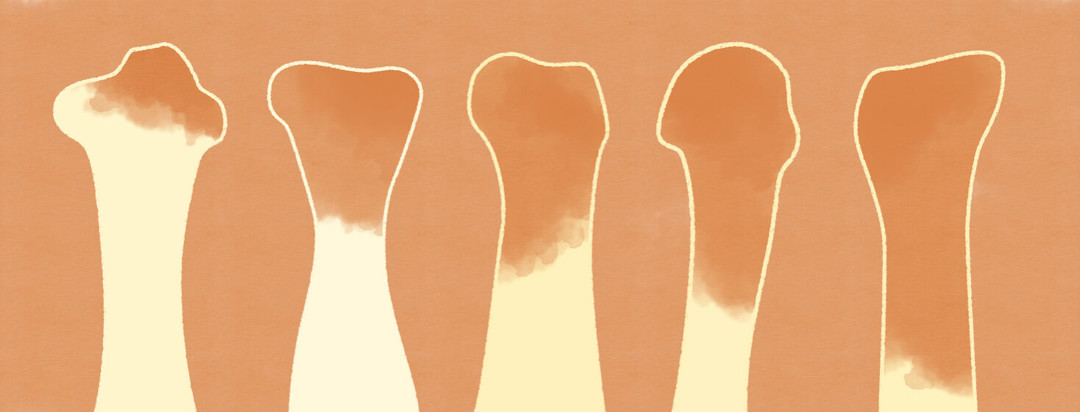Psoriatic Arthritis and Bone Erosions
Psoriasis affects the skin, but psoriatic arthritis (PsA) is an autoimmune disease where the immune system attacks not only the skin but also the joints. About 30 percent of people with psoriasis also develop PsA.1
PsA can present in a variety of ways, which can sometimes make accurate diagnosis difficult. Knowing more about PsA and its pattern of symptoms and spread can help with faster diagnosis and treatment.1
The research on psoriatic arthritis and its connection to the bone
A recent study looked at progressive bone erosion and changes in joints in people with psoriasis and people with PsA. Age was found to be a factor of the severity of bone erosion. People over the age of 60 had nearly double the bone erosion of those age 20 to 40.1,2
There was more bone erosion in the PsA group than in the psoriasis-only group. There was no major difference between people with psoriasis and those without psoriasis. Bone erosions are due to both inflammatory damage, as well as general damage from everyday activity. The extra inflammatory damage from inflammatory cytokines (proteins that control the growth and activity of immune system cells) in PsA appears to speed up the erosion process.1,2
How are bone erosions determined? What are the signs?
While there are signs and symptoms of PsA, bone erosion is a bit trickier to determine.
Bone erosion can be detected by imaging tests. A new form of imaging that visualizes bones in 3D is high-resolution peripheral quantitative computed tomography (HR-pQCT). This allows doctors to see bone density and weakness more accurately than other kinds of imaging tests or bone scans.1
Knowing the early signs and symptoms of PsA are important. Early identification, diagnosis, and treatment can help to reduce joint damage and improve quality of life. Signs and symptoms of PsA can include:3
- Pain and swelling in the joints (hands, feet, wrists)
- Stiffness or fatigue
- Patches or large areas of psoriasis
- Pain or swelling and stiffness may come and go
The impact of psoriatic arthritis inflammation
This is especially important because as the inflammation with PsA gets worse, this also increases the risk of irreversible joint damage associated with PsA.4
In order to properly diagnose PsA, a physical exam should be done, along with imaging tests like ultrasound or MRI. This can find low-grade joint inflammation or enthesitis (inflammation of the spaces where ligaments and tendons attach to the bones).4
Treatment for PsA can include nonsteroidal anti-inflammatory drugs (NSAIDs), disease-modifying antirheumatic drugs (DMARDs), and immunosuppressants. Certain medications are approved for PsA, including the IL-17A inhibitors secukinumab and ixekizumab, as well as another targeted therapy called ustekinumab.4
Talk with your doctor about your treatment and your level of bone erosion. They can work with you to assess your PsA and bone erosion and determine the best course of treatment at each stage of disease.
Understanding psoriatic arthritis progression
As the disease progresses, inflammation becomes even worse. More studies are needed to see how this affects the progression of disease and bone erosion. The longer the disease goes untreated and the inflammatory process goes untreated, the more damage is done to bones and joints in PsA.2
While there is no cure, there is treatment and things you can do to help protect your bones:1
- Maintain a healthy weight. Excess weight can cause strain on bones and joints, making inflammation and pain worse.
- Assess your calcium intake. People with PsA are more likely to get bone fractures, so it is important to build up bone strength. Calcium can help with this.
- Do weight-bearing exercise. Activities like walking, jogging, dancing, and tennis can help build bone strength. Things like swimming (which is not weight-bearing) can be easier when you are dealing with a PsA flare.
Getting timely treatment and following a treatment plan can help lessen the progression of the disease, help treat symptoms, and improve your quality of life. Talk with your doctor about what else you can do to help maintain bone health and potentially slow done bone erosions or bone and joint damage.

Join the conversation